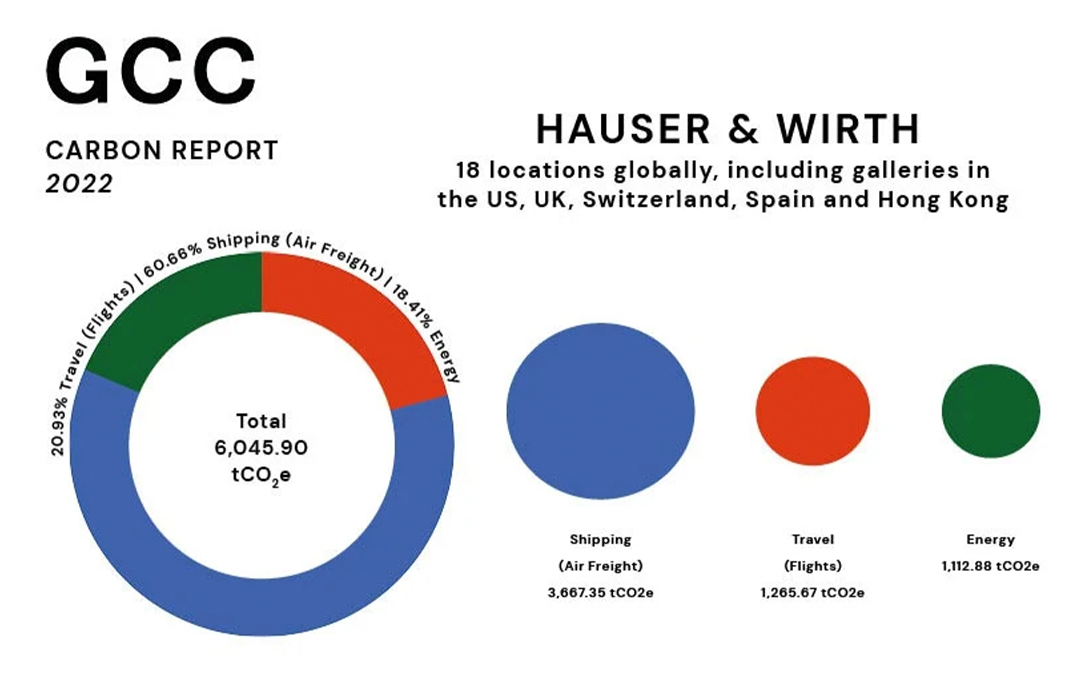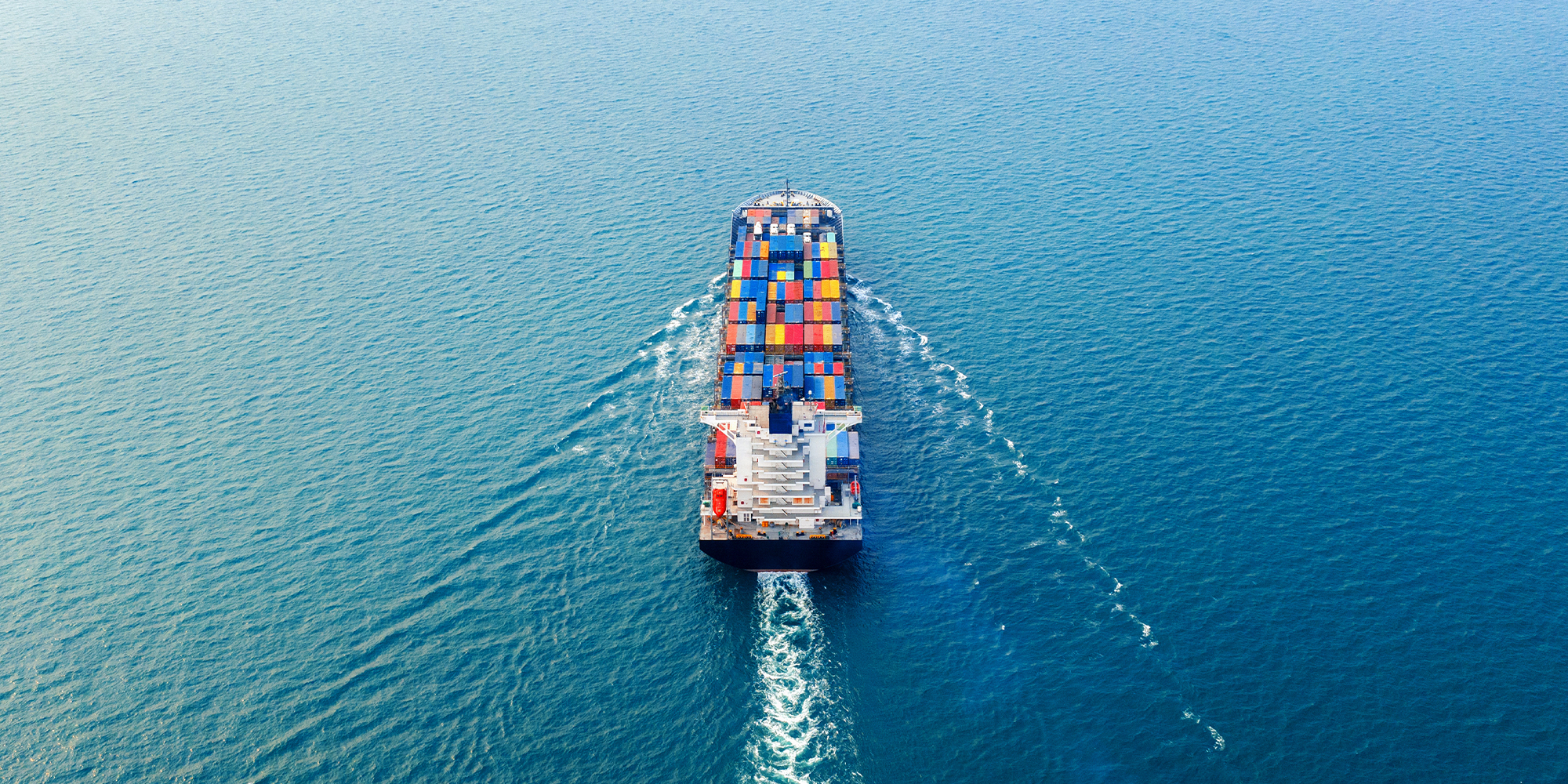
Our Sustainability Commitments
As we continue to embed sustainable practices into our gallery activities, we are learning as we go and there are several strands to the work. These include focusing on industry collaboration to foster change, to creating a culture of reduction within the gallery, backed up by hard data analysis and switching to clean power options.
Measure it
Calculating our emissions has been one of our first actions to drive our program of reduction. By better understanding our impacts, we have been able to manage them more effectively. Our scope 1 and 2 (energy and fuel) and our scope 3 (flights, freight, storage, exhibition construction and packaging) emissions are independently audited by ERM. Hard data made us aware that the shipping and storage of artworks accounts for about 45% of our gallery’s emissions, while travel accounts for about 20% and building emissions about 10%. Based on these metrics our reductions are directed by a comprehensive strategy across our galleries.
Science Based Targets initiative (SBTi)
Sharing our process and progress transparently is a critical element. As well as understanding and measuring our impacts, we are taking responsibility for our commitment by enrolment in the Science Based Targets initiative. This means that we have demonstrated an externally validated set of emissions and targets with a pathway to achieving our reduction goal of 50 percent by 2030 in line with the Paris Agreement.
Read our SBTi commitments.
Read more about Carbon Reporting and setting a Science Based Target (SBTi) for your gallery.
Watch an In Conversation with Danny Chivers, GCC Environmental Consultant and Cliodhna Murphy on setting Carbon Reduction Targets.

Source: GCC Calculator
Carbon Budgets
Since 2022, we’ve gathered data specifically on the emissions of our exhibitions and fairs, to better understand the carbon costs of freight, packing, crating, construction and travel. Using this data, we can analyze and cap impacts and set exhibition carbon budgets. Our teams continuously review the efficacy of these tools. The plans for the carbon budgets were developed with internationally recognized consultants, the Carbon Accounting Company.
Renewable power
We are working hard towards 100% fully renewable energy for our galleries. Over 70% of our energy globally is now from renewable sources and we have switched our providers in France, UK, USA, Spain and Switzerland saving over 800 tCO2e since we began to track our emissions in 2019. Our transition to renewable energy has resulted in a 50% reduction in this emissions category, even with the new spaces we’ve opened. We have completed detailed energy audits of our key locations and are implementing the recommendations of these studies by transitioning to LED lighting, optimizing our heating and cooling systems and switching to electric vehicles where possible.
Building Sustainability
As of 2024, our West Hollywood gallery achieved LEED® Platinum certification, reserved for buildings that demonstrate leadership in sustainability. Our West Hollywood gallery is the only commercial gallery on the West Coast of the United States to have achieved LEED certification.
The project incorporates environmentally conscious strategies comprising;
100% renewable building energy consumption
86% construction waste diverted from landfill
74% of regularly occupied spaces are naturally daylit
48% water use reduction
45% energy use reduction and increased indoor ventilation with CO2 monitoring

Shipping
There are some set views about moving art works we are working to overturn. Since 2019 we’ve reduced our shipping emissions by 35% through the relationships we’ve established with shippers and finding new ways of working. Most significantly in the last couple of years we’ve been transporting more works of art by sea.
There is a long-held preconception that sea freight is not an option for high value painting, but this is simply no longer the case. We discovered that with the right crating, insurance, and remote supervision it is absolutely a viable route. As a result, in 2023 we saved 200 tCO2e by shifting six exhibitions from air to sea freight. That’s equivalent to saving 100 return economy flights between London and New York.
To help others navigate the shift, we’ve created a white paper on sea freight that can be found on our website and on the GCC’s blog. We want to encourage a global movement in our industry by sharing our findings.
Packaging
Packaging makes up 4% of our carbon emissions and while this is a relatively low category it is certainly achievable to reduce our packaging waste. The solutions to sustainable packaging are driven by locally available materials and waste streams. Our team is partnering with crate makers to identify materials that have a low environmental impact. Our team have created a reusable packaging solution that is currently being tested with artist studios, art fairs and framers.
We are collaborating with conservator Kim Kraczon who delivers training on sustainable packaging, materials and waste solutions to our teams.
Exhibition Construction
We are working with Parsons Healthy Materials Lab to identify alternative low impact materials for exhibition construction that mitigate waste and harmful exposure.
Our carbon calculations tell us that the impact associated with redesigning our exhibition spaces remains relatively low compared to other aspects of our activity. By finding alternative options, we’re committed reducing the waste and materials used in gallery builds.